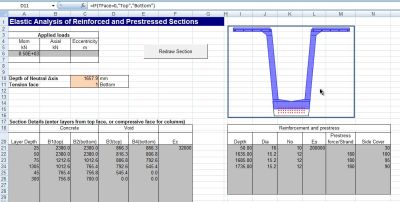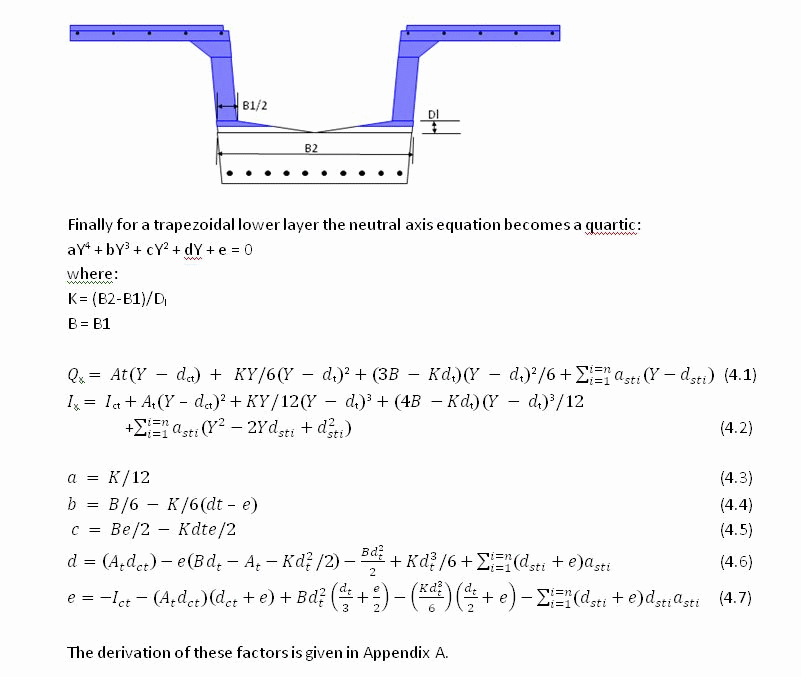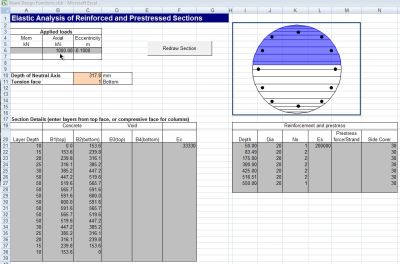Increased yield strengths of reinforcing steels have increased the importance of the Serviceability Limit State in reinforced concrete design, with SLS reinforcement stresses, crack widths, or deflections often controlling the design.
Elastic analysis of a rectangular section under pure bending can be solved easily with a quadratic equation, but for more complex shapes or combined bending and axial load an iterative process is normally used to determine the position of the neutral axis and section strains and stresses.
Click on: RC NA Depth for a paper presenting closed form solutions for any symmetrical reinforced concrete section, with any number of layers of reinforcement, under combined bending and axial load.
An extract from the paper is shown below:
Future posts will describe how these equations can be conveniently solved in an Excel VBA UDF, including calculation of concrete and reinforcement strains and stresses.
Analysis – 2
Read data
‘For each reinforcement layer: Find area, first moment of area about top ,and depth of centroid.
Find total reinforcement section properties over all layers
For each reinforcement layer: adjust section properties for compression from the top surface to the layer.
‘For each concrete layer:
Find area, first and second moments of area about base of layer ,and height of centroid above base.
Find the number of reinforcement layers in the compression zone.
Find composite transformed properties about the base of each layer.
Find the centroid depth for the complete composite section in compression, and the reinforcement in tension.
Find the total prestress force and moment about the concrete centroid.
Find total axial force and bending moment, and nett axial force eccentricity from the concrete centroid and top face.
Check compression face.
If the compression face is bottom face, reverse layers and recalculate section properties.
Find the concrete layer containing the Neutral Axis.
If the Neutral Axis is above the top face (section entirely in tension) or below the bottom face (section entirely in compression) then:
Find top and bottom face stresses and position of NA using stress = P/A + M/Z
Else
Find parameters for Neutral Axis equation
Solve Neutral Axis equation
Adjust for reinforcement layers in the bottom concrete layer, below the Neutral Axis.
Find composite transformed section properties about the Neutral Axis
Find top and bottom face stresses.
Find stresses and strains at each reinforcement layer and top and bottom face.
Find concrete, reinforcement and total axial forces.
Find concrete, reinforcement and total moments.
Check equilibrium.
Finish
Analysis – 3
The theory presented in the previous 2 posts in this series has been incorporated into an Excel UDF, allowing concrete and reinforcement stresses and strains to be evaluated quickly and easily for reinforced and prestressed members of complex cross-section, subject to combined bending and axial load.
The Excel file also includes UDFs for solution of polynomial equations up to quartic, and routines for plotting the cross section shape.
Beam Design Functions Download



No comments:
Post a Comment